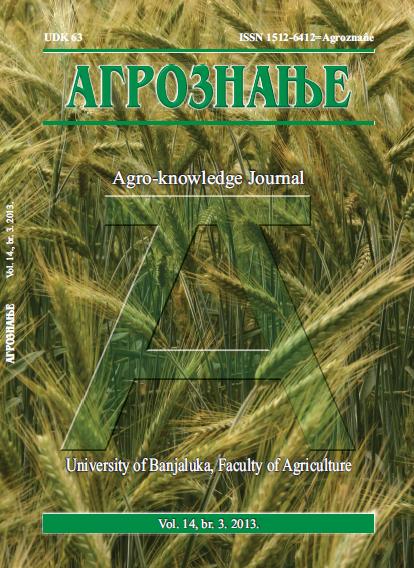Effects of Heavy Metals on Chemical Composition of Camelina sativa L.
DOI:
https://doi.org/10.7251/AGREN1303377PAbstract
Camelina (Camelina sativa L.) is studied mostly as oil plant that can replace oilseed rape in the extensive agriculture. It is a good source of oil (40% oil in seeds) similar to sunflower, soybeans, canola, castor been and other oil crops. Oil of camelina is rich in essential omega 3 fatty acids. In addition, seed protein content is relatively high. Camelina has modest requirements for agro-ecological conditions and it is highly resistant to pathogens. Those features make camelina suitable for human nutrition and animal feed. Its use is related to sustainable agriculture, bio-diesel industry, cold-pressed oils and the use of so-called marginal land. Examination of its ability to uptake and accumulate heavy metals (HM) is interesting from the standpoint of 1) food safety and 2) potential for phytoremediation. Hence, the aim of this study was to investigate the effect of HM on uptake and accumulation of some essential macro- and micronutrients and unwanted HM. Experiments were done with Camelina sativa L., cultivar Stepski 1. The seeds were exposed to 1 µM Cd or Cu and 10 µM Ni or Zn since the beginning of germination. Plants were grown in water cultures, in semi-controlled conditions of a greenhouse, on ½ strength Hoagland solution to which were added HM in the same concentrations as during germination. Concentrations and distribution of Ca, Mg, P, K, Fe and Mn in roots and shoots were altered in the presence of increased concentration of Cd, Cu, Ni and Zn.Downloads
Published
2013-12-13
Issue
Section
Articles

